A Lawyer That You Can Trust
Explore Our Gang Crimes The Step Act And Pc 186 22
Torrance Gang Crimes Lawyer
GANG CRIMES – THE STEP ACT AND PC § 186.22
The California Street Terrorism Enforcement and Prevention Act of 1988 (Cal. Pen. Code §186.20, et. seq.(“The STEP Act”), created a substantive crime of being an active participant in a criminal street gang (§ 186.22(a)) and a sentencing enhancement for committing a felony for the benefit of a criminal street gang (§ 186.22(b)).
Proposition 21, enacted in 2000, added an alternative sentencing scheme for committing a felony or misdemeanor for the benefit of a criminal street gang (§ 186.22(d)). These provisions have been the subject of much litigation over the years.
As a prosecutor, Pat Carey prosecuted hundreds of gang cases, including gang murders. He worked with gang detectives and has insider information on some of the most notorious gangs in the world. Pat Carey uses that expert knowledge for his clients to make sure they are not overly punished, or punished at all for that matter, simply because they are a member of a gang.
The STEP Act, in subdivision (f), provides a unitary definition of “criminal street gang” to be used in its various provisions, including the substantive offense (subd. (a)) and the enhancement (subd. (b)). Subdivision (f) defines a “criminal street gang” as:
- a group of three or more people;
- having a primary activity of commission of one or more of the predicate crimes listed in paragraphs (1)-(25) and (31)-(33) of subdivision (e);
- “having a common name or common identifying sign or symbol”;
- whose members engage in a pattern of criminal gang activity.
These terms are each explored further below.
“Any Ongoing Organization, Association, or Group of Three or More Persons, Whether Formal or Informal.”
To establish a gang exists, the prosecution must prove there is an “ongoing organization, association, or group of three or more persons, whether formal or informal.” (§ 186.22, subd. (f).) This aspect of the gang definition has not been the subject of many published decisions. It appears that the “ongoing” nature of the group is simply established by satisfaction of the other elements of the gang definition, particularly the “pattern of criminal gang activity” element. (See e.g. People v. Fiu (2008) 165 Cal.App.4th 360, 388 (satisfaction of “pattern” element shows there was no “failure to demonstrate that the gang is an ongoing or continuing criminal enterprise rather than an ‘off-again-on-again part-time organization’”).)
“Primary Activities”
The prosecution must establish that the group has “a primary activity of commission of one or more of the predicate crimes listed in paragraphs (1)-(25) and (31)-(33) of subdivision (e).” ( § 186.22, subd. (f).)
- A chief or principal occupation: “Primary activity” means “the commission of one or more of the statutorily enumerated crimes is one of the group’s ‘chief’ or ‘principal’ occupations.” (People v. Sengpadychith (2001) 26 Cal.4th 316, 323.)
- Consistent and repeated commission sufficient: Proof that a “group’s members consistently and repeatedly have committed criminal activity listed in the gang statute” is sufficient to establish the gang’s primary activity. (Id. at 324.)
- Occasional commission insufficient: The occasional commission of crimes by the gang’s members, however, is insufficient. (Id.)
- Past and current offenses considered: The trier of fact may consider past offenses and the charged offenses in determining whether the primary activity element is satisfied. (Id. at 320, 323.)”
“Common Name or Common Identifying Sign or Symbol”
- Sub-Group Cases
- Common use of name “Norteños” did not establish group as a street gang where expert testified that Norteño and Sureño are not the names of gangs and where individuals from a number of different Norteño cliques or gangs came together one day to attack Sureños. (People v. Valdez (1997) 58 Cal.App.4th 494, 507-508.) “Under the circumstances, the questions of how such a diverse group, which, in [expert’s] opinion, represented seven different Norteño gangs, could have been acting for the benefit of a street gang and whether the participants were doing so presented matters far beyond the common experience of the jury and justified expert testimony. (Id. at 508-509.)
- Evidence of existence of gang sufficient, rejecting defendant’s argument “the term ‘Norteño’ is merely the geographical identity of a number of local gangs with similar characteristics, but is not itself an entity.” (People v. Ortega (2006) 145 Cal.App.4th 1344, 1355-1357 (noting, unlike Valdez, there was no testimony that Norteño was not the name of a gang).)
- Gang offense conviction and gang special circumstance finding reversed where evidence was sufficient to establish smaller group (“Small Town Peckerwoods”) was a gang, but court could not determine whether jurors based verdicts solely on evidence of that group, “or also erroneously considered evidence related to some larger Peckerwood organization.” (People v. Williams (2008) 167 Cal.App.4th 983, 985.) “[S]omething more than a shared ideology or philosophy, or a name that contains the same word, must be shown before multiple units can be treated as a whole when determining whether a group constitutes a criminal street gang. Instead, some sort of collaborative activities or collective organizational structure must be inferable from the evidence, so that the various groups reasonably can be viewed as parts of the same overall organization.” (Id. 167 Cal.App.4th at 988.)
- Multiple Names: “The association of multiple names with a gang satisfies the statute’s requirement so long as at least one name is common to the gang’s members.” (In re Nathaniel C. (1991) 228 Cal.App.3d 990, 1001.) In Nathaniel C., the court held that the Name/Sign/Symbol element was satisfied where gang was known by two names and “there was graffiti which signified the gang, though no particular color or clothing was associated with gang membership.” (Nathaniel C., 228 Cal.App.3d at 1001.)
“Pattern of Criminal Gang Activity”
The statute defines the “pattern of criminal gang activity” element in subdivisions (e) and (j).
-
- Subdivision (e) provides that a pattern is established by the commission of certain predicate offenses by members of the gang:
- Subdivision (e) provides that a pattern is established by the commission of certain predicate offenses by members of the gang:
- “the commission of, attempted commission of, conspiracy to commit, or solicitation of, sustained juvenile petition for, or conviction of two or more” offenses listed in paragraphs (1)-(33) of subdivision (e);
- “at least one of these offenses occurred after the effective date of this chapter”, i.e. after September 26, 1988;
- “the last of those offenses occurred within three years after a prior offense”; and
- “the offenses were committed on separate occasions, or by two or more persons.”
- Subdivision (j) adds that the pattern cannot be established solely by proof of offenses listed in (e)(26)-(30); those offenses can only serve as a predicate for the pattern when coupled with an offense in the (e)(1)-(25), (31)-(33) ranges.
- Case Law
- The predicate offenses need not be gang related, but must have been committed by gang members. (People v. Gardeley (1996) 14 Cal.4th 605.)
-
-
- The two or more predicate offenses establishing the pattern can be shown by:
-
- two prior offenses;
-
- one prior offense + the current offense (Gardeley, 14 Cal.4th at 625); or
-
- the current charged offense committed by the defendant and the contemporaneous commission of a second predicate offense by a fellow gang member (People v. Louen (1997) 17 Cal.4th 1, 10 (two predicates established by D’s ADW on victim and fellow gang member’s contemporaneous separate ADW on same victim).
-
- An offense committed by defendant on a separate occasion can be a predicate offense for participation in a criminal street gang. People v. Tran (2011) 51 Cal.4th 1040, 1044.
- The two or more predicate offenses establishing the pattern can be shown by:
-
-
-
- Two predicate offenses are not established by D’s assault on victim combined with fellow gang member’s contemporaneous aiding and abetting of that same assault. (People v. Zermeno (1999) 21 Cal.4th 927, 931.)
-
-
- An offense occurring after the date of the charged offense does not constitute a predicate offense. (People v. Godinez (1993) 17 Cal.App.4th 1363, 1370, disapproved on other grounds in People v. Russo (2001) 25 Cal.4th 1124, 1134.)

Case Results
See How We've Helped Other People in Your Shoes
-
Case Dismissed Top Torrance Courthouse
-
Juvenile Case Dismissed Los Angeles Superior Court, Long Beach
-
Terminate Sex Offender Registration Top Torrance Courthouse
-
Charges Dismissed Top Torrance Courthouse
-
33 Charges Dismissed Top Torrance Courthouse
-
“Found Pat to represent me on a case after I made a dumb mistake. I was completely clueless. Pat made is so much less stressful and most of all he negotiated a deal that ended up getting my case dismissed.” - Kristin B.
-
“Pat helped me with a troubling legal situation. He made a very stressful process stress-free and was always available to explain each step of the process.” - Thomas B.
-
“He is exceptionally talented and knows his way around a courtroom better than most lawyers I’ve met. Pat is smart, aggressive and results oriented.” - Alan J.





